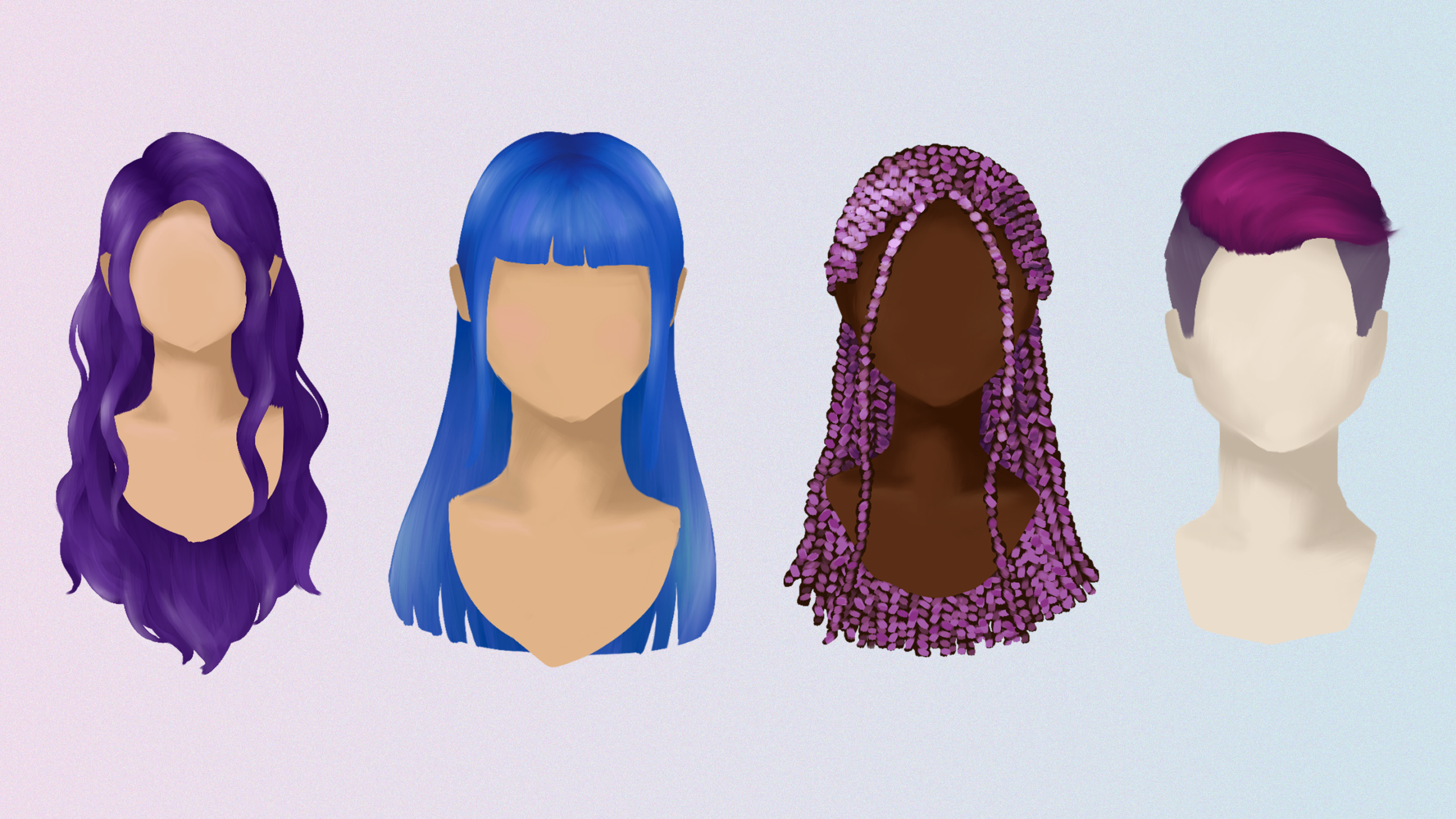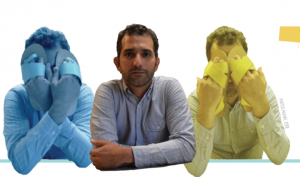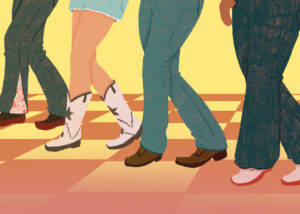When I walked into my thesis advisor’s office with nothing new to show him but my blue hair, I took a moment to reflect. Was I contemplating fulfilling the minimum requirements to graduate with an American Studies degree? No.
Responsibly, I reflected on the role of dyed hair at Georgetown.
I’ve never cared much about fashion. Of course, I want to look good (and do, most days, in my rough-around-the-edges, 10 minutes late to class with a giant iced coffee sort of way). I know style is important: I’m entering the closing stretch of senior spring, in my prime era to meet someone new for late-night mayhem, and I wouldn’t want my fit to hurt my chances.
But what I care most about is my naturally brown, currently purple, and often blue hair. I’ve always thought hair makes or breaks a man’s look, and my hair—fluffy, thick, and framed by a big widow’s peak—has always anchored my sense of confidence.
I like my brown hair; it’s the same color as my dad’s and grandpa’s when they were young. But, after attending a Catholic high school—which interestingly allowed flip flops, but not ripped jeans or unnatural hair colors—I was ready to rebel against society coming into Georgetown.
The first time I dyed my hair was October of freshman year. My friend Molly Kenney (CAS ’25), who’s dyed her hair consistently since high school, met me in my New South room with its Potomac River view for my “hair death party” (according to the Google Calendar invite). We chatted with a couple of our friends and waited 45 minutes for the bleach to take hold and nearly an hour for the dye to soak. Then, the reveal: bubblegum pink.
My new hair debuted that evening as I strolled to Midnight Mug for a matcha (back then, the matcha was still green). I loved how everyone looked at me. It made me feel seen; people noticed me when I walked into the room.
I kept the pink for a couple of weeks, but as it washed, I didn’t like how it looked against my complexion. It accentuated orange notes in my skin, reminiscent of another orange man. I changed it pretty quickly.
I loved my blue hair. It was fun. It made me feel as though there are more joyful and silly moments in life than serious ones. And it was practical: my friends had no trouble finding me in Leo’s or on the dance floor. It also washed into a stunning turquoise-green reminiscent of Sulley from Monsters, Inc.
However, while I try not to hold regrets about college, I do apologize to the fellow men of New South three for turning one of the shower stalls blue in November 2021 (and several more times in the spring of 2022).
Many people started to know me for my blue hair. I often walked into Intro to International Relations late and sat down in the very front of the ICC auditorium—it’s hard to miss the one guy with bright blue hair in a 200-person lecture.
There are very few people at Georgetown with colored hair, and it stands out against the pre-professional aesthetic that so many students embrace.
“You get treated just a tad different. It’s like there’s a norm you’re not following,” Catherine Dunning (CAS ’26) said when I asked her why there aren’t many students with dyed hair. Catherine has colored her naturally blonde hair black since high school, and in middle school, she dyed the ends blue like they were dipped in Kool Aid.
When I asked Kenney whether she has worried about professional expectations with her dyed hair, which has been almost every color of the rainbow over her four years of college, she answered, “Absolutely.”
“I think that’s definitely something that’s keeping a lot of people from doing it and having fun with it, because the professional world is so anti-expressing yourself, through tattoos, piercings, dyed hair, whatever,” Kenney said. “It’s the fear of going into a professional world with that because jobs are so hard to find now.”
And I understand this. For me, dyeing my hair was about rebellion—about choosing a new way to look and be regardless of what other people thought, including my parents. But dyed hair and rebellion evoke a sense of youth commonly thought appropriate for angsty teenagers, and not accomplished graduates of Georgetown University.
For Roan Bedoian (CAS ’28), whose hair is dark purple, the professional expectation to have natural hair comes to mind as she looks for summer jobs and internships.
“Is my hair gonna affect what they think of me? I don’t know. And I like to think it won’t,” Bedoian said. “And I also like to think I wouldn’t wanna work for people who would judge someone or not hire someone simply because of their appearance.”
“This is who I am, this is what I do. I wouldn’t wanna work for someone who wouldn’t accept that, because [my hair color] literally affects no one but me,” Bedoian added.
This tension between perceived professionalism and dyed hair is something I’ve struggled with, too. I stopped dyeing my hair during junior year—I was focused on applying to internships, and I thought colored hair would create more problems than it’s worth. I still think about it today. I’ll take my senior photos in my cap and gown in a few weeks, and I wonder whether I want to look back at them and see purple hair.
But, after all this time, I can tell you this much: it’s just hair. At this moment, purple hair makes me feel good. It makes me feel noticed, playful, and alive—and that’s plenty for me. I don’t see many other people with dyed hair, and I hope that’s not because people are afraid to stick out or think they won’t get an internship. I will always smile when I see someone with dyed hair, because I know that they, like me, are unafraid to walk into a room and have everyone notice them.





